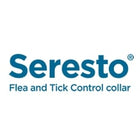What Is Demodectic Mange In Cats?
Demodicosis, sometimes called demodectic mange, is a skin inflammation in felines leading to symptoms like itching, an accumulation of ear waste, frequent head shaking, lesions, and alopecia.
This condition arises due to certain tiny Demodex mites that inhabit the cat's skin. Cats primarily get infected by three variants of these mites: Demodex gatoi, Demodex cati, and another uncommon, unnamed Demodex species.
While Demodex mites might be found in various pets at home, they are particular to each species. For instance, mites that thrive on dogs won't migrate and affect cats and the other way around.
Causes Of Demodectic Mange In Cats
Three main types of Demodex mites lead to Demodectic mange:
- Demodex gatoi: Commonly found in healthy felines, these mites reside in the skin's superficial layer and can spread among cats.
- Demodex cati: Typically found in cats with weakened immune systems due to another ailment or disorder. They inhabit hair follicles and can occasionally be located in the ear passages of the impacted cats.
- An uncommon, unidentified Demodex variant: Although infrequent, this mite is often linked to some underlying illnesses and tends to reside in hair follicle
Symptoms Of Demodectic Mange In Cats
The signs you observe will vary based on the type of mite affecting your feline.
Signs of Demodex Gatoi
The predominant sign of Demodex gatoi is itchiness, which can cause the cat to over-groom. This often results in hair thinning and flaky skin. Additionally, excessive licking and scratching might lead to the formation of scabs and wounds on the cat.
Signs of Demodex Cati
With Demodex cati, skin problems can be localized or widespread across the cat's body. Typical skin reactions involve inflammation, flakiness, scabbing, and hair shedding. The level of itchiness can range from mild to intense. For some cats, the only noticeable symptoms might be an accumulation of ear waste and signs of ear discomfort, leading to frequent head shaking.
Diagnosis Of Demodectic Mange In Cats
Identifying demodectic mange typically requires mite tests and additional procedures based on the results and the specific mite involved.
Demodex Gatoi Diagnosis
To diagnose Demodex gatoi, skin samples or adhesive tape might be used to collect skin fragments and detritus for microscopic examination. Checking feces for mites or their eggs can also provide insights.
Nonetheless, pinpointing Demodex gatoi can be challenging. If mites are elusive, but an infection is suspected, your veterinarian might suggest initiating treatment regardless. A subsequent positive reaction to this treatment could then validate the diagnosis.
Demodex Cati Diagnosis
Spotting Demodex cati is usually straightforward on thorough skin samples that are microscopically inspected. These mites can also be detected on ear samples observed under a microscope.
It's notable that cats afflicted with Demodex cati often suffer from conditions that weaken the immune system, such as feline viral infections (like FeLV and FIV), malignancies, diabetes, or toxoplasmosis. In light of this, a veterinarian should conduct additional tests to pinpoint any root issues.
Treatment Of Demodectic Mange In Cats
Treatments for all Demodex mite varieties are consistent. Typically, 2% lime sulfur dips administered weekly for a few weeks or at least two doses of Bravecto or Revolution Plus have shown efficacy in treating Demodex in felines. While no product is officially endorsed for treating Demodex in cats, these flea medications have proven beneficial.
Since Demodex gatoi can spread amongst cats, treating every feline that might have come in contact with an infected one is essential.
Recovery Of Demodectic Mange In Cats
Typically, treatments can effectively eradicate Demodex gatoi mites; however, itchiness might continue for a few weeks post-treatment.
For Demodex cati, the effectiveness of the treatment hinges on recognizing and addressing any co-existing condition weakening your cat's immune defenses.
There's no need for environmental interventions, as Demodex mites can't thrive outside a host. Importantly, these mites don't transmit to humans or canines.







